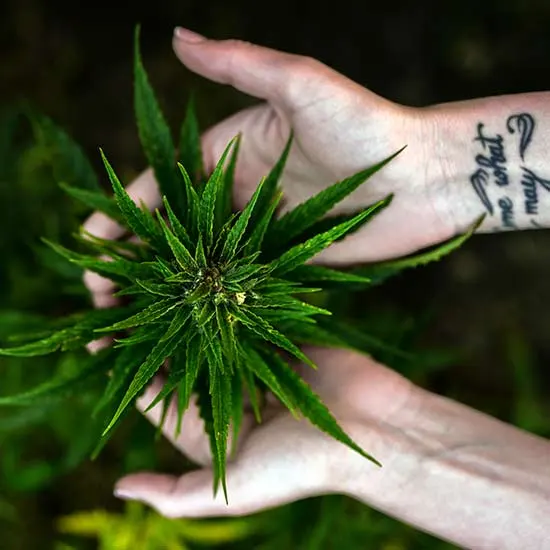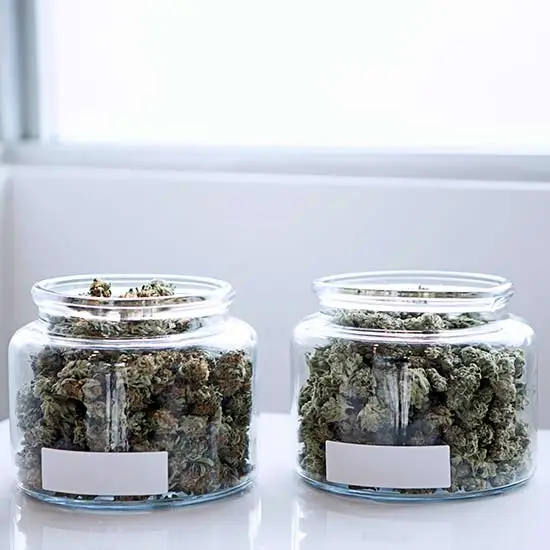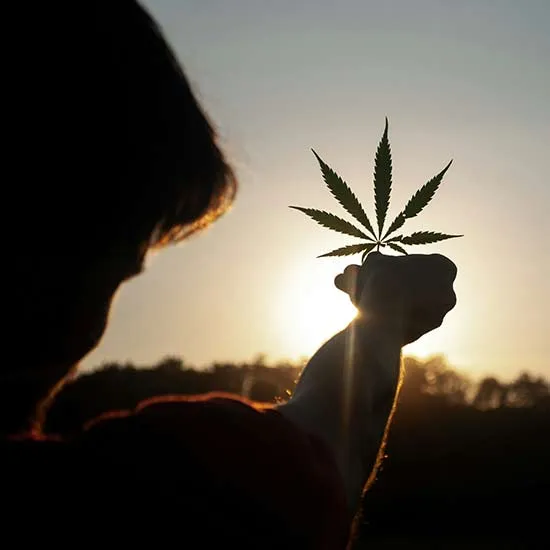As fireworks light up the sky and we gather to celebrate Independence Day, it’s worth reflecting on another type of freedom gaining ground in the U.S.—the freedom to use cannabis legally. Just as our forefathers fought for liberty, modern advocates have championed the cause of cannabis legalization, transforming it from taboo to triumph.
From Hemp to Highs: The Early Days

Colonial Roots: Hemp in the New World
America’s relationship with cannabis began long before the founding of the nation. In the early colonial days, hemp was a crucial crop. The plant, known scientifically as Cannabis sativa, has two main varieties: hemp and marijuana. Moreover, hemp contains deficient levels of THC, the psychoactive compound in marijuana. It was primarily grown for its strong fibers.
Colonial farmers grew hemp for practical purposes. Its sturdy fibers were used to make ropes, sails, and clothing. In some colonies, farmers were legally required to grow hemp to support the burgeoning maritime industry. Not surprisingly, hemp was so valuable that it was used as currency in some places. The Founding Fathers, including George Washington and Thomas Jefferson, were known to cultivate hemp on their plantations.
19th Century: Cannabis as Medicine
By the 19th century, cannabis had found its way into American pharmacies. It was often used in medicinal tinctures, which are liquid extracts typically made with alcohol. These tinctures were prescribed for a variety of ailments, including pain relief, nausea, and even psychological conditions.
Cannabis was included in the U.S. Pharmacopeia in 1850, recognizing its medicinal value. It was commonly available and widely used. During this time, cannabis was not associated with the stigma it would later carry. Instead, it was seen as a beneficial plant with various practical and medicinal uses.
Early 20th Century: The Shift Towards Criminalization
The early 20th century marked a significant shift in the perception and regulation of cannabis. Several factors contributed to this change, including economic interests, racial prejudices, and political agendas. The Mexican Revolution of 1910 led to an influx of Mexican immigrants into the United States. With them, they brought the recreational use of marijuana, which was new to many Americans.
Racist and xenophobic sentiments fueled the fear and mistrust of these immigrants and their customs, including marijuana use. The media began to portray cannabis as a dangerous drug associated with criminal behavior and moral decay. Sensationalist stories and propaganda films like “Reefer Madness” depicted marijuana users as violent and insane, further entrenching negative stereotypes.
The Marihuana Tax Act of 1937
The growing fear and misinformation culminated in the Marihuana Tax Act of 1937. This Act effectively criminalized cannabis by imposing strict regulations and taxes on its sale, possession, and transfer. While the Act did not outright ban cannabis, it made compliance so burdensome that legal sales and use became nearly impossible.
The legislation was driven by powerful figures like Harry Anslinger, the first commissioner of the Federal Bureau of Narcotics. Anslinger capitalized on the public’s fears, using racially charged rhetoric to push for the prohibition of cannabis.
The Marihuana Tax Act marked the beginning of a long period of cannabis prohibition in the United States. This era was characterized by harsh penalties and widespread enforcement, laying the groundwork for the War on Drugs that would follow decades later. Now, the once-valued crop and medicine had become a symbol of fear and controversy, setting the stage for a long and contentious battle over its legalization.
The War on Drugs: A Dark Chapter

Introduction of the War on Drugs
The 1970s ushered in a new era of drug policy in the United States. It was to have profound and lasting effects on cannabis and its users. President Richard Nixon declared drug abuse “public enemy number one” in 1971, marking the beginning of the War on Drugs. This campaign aimed to eradicate illegal drug use through strict enforcement and severe penalties. Understandably, the era witnessed a massive increase in government spending on drug control.
Cannabis as a Schedule I Substance
One of the most significant actions taken during this time was the classification of cannabis as a Schedule I substance under the Controlled Substances Act of 1970. This designation placed cannabis in the same category as heroin, LSD, and ecstasy, drugs considered to have a high potential for abuse and no accepted medical use.
The decision to label cannabis as Schedule I was controversial and largely based on political motivations rather than scientific evidence. A report from the Shafer Commission, appointed by Nixon himself, recommended decriminalizing cannabis, stating that the drug’s dangers had been exaggerated. However, Nixon ignored these findings, and the harsh classification remained.

Criminalization and Its Consequences
The War on Drugs led to a dramatic increase in arrests and incarcerations for drug-related offenses, particularly for cannabis. Soon, law enforcement agencies across the country ramped up efforts to crack down on marijuana possession, cultivation, and distribution. Simple possession of small amounts of cannabis often resulted in severe legal consequences, including long prison sentences.
The Era of Fear and Stigma
During the height of the War on Drugs, cannabis users were often vilified and portrayed as dangerous criminals. Also, the media played a significant role in perpetuating this stigma. Sensationalist stories began to hit the news, with images depicting marijuana as a gateway drug that led to a life of addiction and crime. Further, public service announcements and anti-drug campaigns reinforced these negative stereotypes. As a result, cannabis users were alienated from mainstream society.
This period was characterized by fear and misinformation. Parents were warned that their children could be lured into a life of drug use, and schools implemented zero-tolerance policies that punished even minor infractions harshly. The message was clear: cannabis was a dangerous drug that had to be eradicated at all costs.
The Long Shadow of the War on Drugs
The War on Drugs cast a long shadow over American society, shaping public perceptions and government policies for decades. The aggressive stance on cannabis and other drugs led to overcrowded prisons, strained law enforcement resources, and a significant financial burden on taxpayers. Moreover, the social and racial injustices perpetuated by these policies left lasting scars on many communities.
Shifting Perspectives and the Road to Reform
In recent years, there has been a growing recognition of the failures of the War on Drugs, particularly regarding cannabis. Public opinion has shifted significantly, with more people supporting legalization and decriminalization. States have begun to pass laws allowing medical and recreational cannabis use, challenging the federal government’s stance.
The movement towards reform is driven by a combination of factors, including advocacy by grassroots organizations, scientific research highlighting the benefits of cannabis, and a broader push for criminal justice reform. While the legacy of the War on Drugs continues to impact many, there is hope that future policies will prioritize public health, social justice, and individual freedoms over punitive measures.
Seeds of Change: The Push for Legalization

A Spark of Hope in the 1990s
The 1990s marked the beginning of a significant shift in the fight for cannabis legalization. This decade saw the rise of medical marijuana advocacy, driven by compelling stories of patients finding relief where conventional medicine had failed. California became the epicenter of this movement with the passage of Proposition 215 in 1996. This landmark legislation, also known as the Compassionate Use Act, allowed patients and their primary caregivers to possess and cultivate cannabis for medical purposes with a doctor’s recommendation.
Proposition 215 was groundbreaking because it was the first state law to recognize the medicinal value of cannabis, directly challenging federal prohibition. This victory was not just about providing access to cannabis; it was about validating the experiences of countless patients suffering from chronic pain, epilepsy, cancer, HIV/AIDS, and other debilitating conditions. The law inspired a wave of activism and set a precedent for other states to follow.
Changing Public Perception
The success of Proposition 215 began to shift the public perception of cannabis. Media coverage and personal testimonies highlighted the therapeutic benefits of medical marijuana. Patients who had been stigmatized for their cannabis use started to share their stories openly, humanizing the issue and demonstrating that cannabis was not just a recreational drug but a vital medicine for many.
These stories played a crucial role in changing hearts and minds. People began to see cannabis users not as criminals, but as individuals seeking relief and better quality of life. This growing awareness helped to dismantle some of the negative stereotypes perpetuated by the War on Drugs.
State-by-State: A Green Revolution

The Domino Effect
California’s trailblazing move paved the way for other states to adopt similar medical marijuana laws. Over the next decade, states like Oregon, Washington, Alaska, and Maine followed suit. By 2012, more than a dozen states had legalized medical cannabis, creating a patchwork of laws across the country.
The real breakthrough came in 2012 when Colorado and Washington became the first states to legalize cannabis for recreational use. Voters in these states approved measures to regulate and tax cannabis similarly to alcohol, signaling a major shift in public policy. These pioneering states demonstrated that legal, regulated cannabis markets could operate successfully, providing economic benefits and reducing criminal justice costs.
A Growing Acceptance
The state-by-state approach to legalization highlighted the growing acceptance of cannabis in American society. As more states passed laws allowing medical and recreational use, the stigma surrounding cannabis began to erode. By 2020, over half the states had some form of legalized cannabis, reflecting a remarkable shift in attitudes.

This green revolution was driven by various factors, including changing demographics, increased public awareness of the medicinal benefits, and a broader movement towards criminal justice reform. The success of legal markets in states like Colorado and Washington provided tangible evidence that legalization could work, further bolstering support.
Federal Hurdles: The Fight Continues

Efforts for Federal Legalization
Despite significant progress at the state level, federal legalization remains a complex and challenging goal. Cannabis is still classified as a Schedule I substance under the Controlled Substances Act, creating a legal conflict between state and federal laws. This classification restricts research, creates banking issues for cannabis businesses, and poses legal risks for individuals and companies operating in legal states.
In recent years, there have been concerted efforts to address these challenges through federal legislation. The Marijuana Opportunity Reinvestment and Expungement (MORE) Act, introduced in Congress, aims to remove cannabis from the Controlled Substances Act, expunge certain cannabis-related convictions, and invest in communities disproportionately affected by the War on Drugs. Another significant proposal is the Cannabis Administration and Opportunity Act, which seeks to decriminalize cannabis at the federal level and establish a framework for regulation and taxation.
The Road Ahead
While these legislative efforts signal progress, there is still a long road ahead. The journey toward nationwide acceptance of cannabis mirrors the broader fight for civil liberties, underscoring the importance of perseverance and patience. Advocates continue to push for change, emphasizing the need for a unified federal approach that respects state laws, supports scientific research, and addresses the injustices of past drug policies.
The path to federal legalization is fraught with political, social, and economic challenges. However, the momentum generated by state-level successes and growing public support provides hope that comprehensive reform is possible.
The Impact: More Than Just a Buzz

Economic Benefits
Cannabis legalization has significantly boosted the economy in states where it is legal. The cannabis industry has emerged as one of the fastest-growing sectors, creating numerous jobs and generating substantial tax revenues. From cultivation and processing to retail and ancillary services, the industry supports thousands of jobs. States like Colorado, California, and Oregon have seen billions of dollars in sales, leading to increased tax revenues that fund public services such as education, healthcare, and infrastructure projects.
In addition to direct economic benefits, legalization has spurred innovation and entrepreneurship. New businesses, from dispensaries to cannabis-infused product manufacturers, have flourished, contributing to local economies and providing consumers with a wide range of products.
Social Justice and Criminal Justice Reform
One of the most significant impacts of cannabis legalization is its contribution to social justice and criminal justice reform. The War on Drugs disproportionately targeted communities of color, leading to high incarceration rates and lasting social and economic consequences.

Legalization has helped address some of these injustices by reducing cannabis-related arrests and providing pathways for expungement and resentencing for those previously convicted of non-violent cannabis offenses. Several states have implemented social equity programs aimed at ensuring that communities most affected by the War on Drugs benefit from the legal cannabis market. These programs provide support for minority-owned businesses, funding for community reinvestment, and initiatives to promote diversity and inclusion within the industry.
Medical Benefits
The medical use of cannabis has been one of the driving forces behind its legalization. Countless individuals have found relief from a variety of conditions, including chronic pain, PTSD, anxiety, epilepsy, and cancer-related symptoms. The therapeutic benefits of cannabis are supported by an increasing body of scientific research, which highlights its potential as an alternative to traditional pharmaceuticals, especially opioids.
Medical cannabis programs in legal states provide patients with access to high-quality, lab-tested products tailored to their specific needs. This has improved the quality of life for many patients, offering a safe and effective treatment option where other medications have failed.
Public Health and Safety
Legalization has also had positive effects on public health and safety. By regulating the cannabis market, states can ensure product quality and safety, reducing the risks associated with black market products that may be contaminated or mislabeled. Legal markets also enable better education and harm reduction efforts, promoting responsible use and providing consumers with accurate information about the effects and risks of cannabis.
Furthermore, legalization allows law enforcement to focus on more serious crimes, improving overall public safety and reducing the burden on the criminal justice system. Resources previously devoted to prosecuting cannabis offenses can now be redirected toward addressing issues like violent crime and opioid addiction.
Looking Forward: A Bright Future

As we celebrate this 4th of July, it’s important to look ahead to the future of cannabis legalization. Despite significant progress, the path to full legalization remains challenging. Federal prohibition continues to create legal and financial hurdles, and there is ongoing resistance from certain political and social groups.
However, the momentum for change is strong. Public support for legalization is at an all-time high, with a majority of Americans favoring legal access to cannabis. Advocacy groups, industry stakeholders, and policymakers are working tirelessly to address the remaining challenges and push for comprehensive reform.
The future of cannabis legalization is bright, with the potential to bring further economic growth, social justice, and medical advancements. As more states move towards legalization and federal laws evolve, the vision of a fully legal and regulated cannabis market in the United States becomes increasingly attainable.
Conclusion: Cheers to Freedom
This Independence Day, as you enjoy the festivities and reflect on the freedoms we cherish, take a moment to consider the journey of cannabis legalization. It is a powerful example of how advocacy, perseverance, and the American spirit can drive change and expand our liberties. The progress made so far is a testament to the enduring fight for what we believe in and the possibilities that lie ahead.
Here’s to independence, in all its forms, and to a future where the benefits of cannabis legalization are fully realized. Cheers to freedom!
The information provided is not a substitute for professional medical advice, diagnosis, or treatment. Consult with a qualified healthcare professional for personalized advice based on your medical condition.




